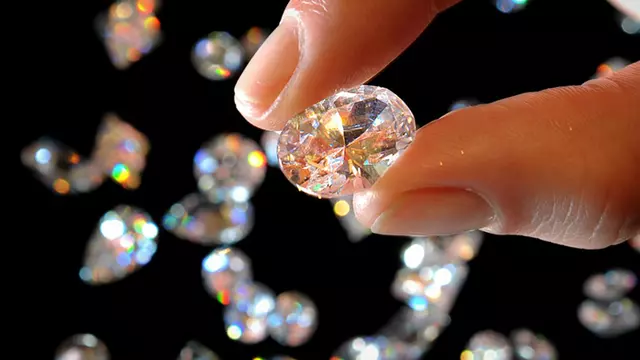Lab-Grown Diamonds: The Ultimate Ethical Statement

In recent years, lab-grown diamonds have taken center stage in the jewelry industry, transforming how consumers perceive luxury and sustainability. These dazzling creations offer all the sparkle and sophistication of natural diamonds while embodying ethical and environmental responsibility. As demand grows, lab-grown diamonds are becoming more than a trend—they’re a statement of values, innovation, and modern ethics.
What Are Lab-Grown Diamonds?
Lab grown diamonds also known as synthetic or man-made diamonds, are created in controlled laboratory environments using advanced technological processes. These processes replicate the conditions under which natural diamonds form in the Earth’s mantle, ensuring that lab-grown diamonds are physically, chemically, and optically identical to mined diamonds.
Two main methods are used to produce these gems:
- High-Pressure, High-Temperature (HPHT): This method mimics the intense heat and pressure found deep within the Earth.
- Chemical Vapor Deposition (CVD): A diamond seed is exposed to carbon-rich gases, which crystallize layer by layer to form a diamond.
The Ethical Dilemma of Mined Diamonds
For decades, the diamond mining industry has been criticized for its environmental and social impacts. Concerns include:
- Conflict Diamonds: Also known as blood diamonds, these are mined in war zones and sold to finance armed conflicts, often leading to human rights abuses.
- Environmental Degradation: Diamond mining disrupts ecosystems, consumes significant energy, and generates massive amounts of waste.
- Exploitation of Labor: In some regions, mining involves unsafe working conditions, child labor, and low wages.
These issues have led consumers to question the true cost of their diamond jewelry and seek alternatives that align with their values.
Why Lab-Grown Diamonds Are Ethical
- Conflict-Free Origins:
Lab-grown diamonds eliminate the risk of supporting conflict zones. Their transparent sourcing ensures that buyers can wear their jewelry with a clear conscience. - Environmental Responsibility:
Compared to traditional mining, lab-grown diamonds have a significantly smaller carbon footprint. They require fewer resources and produce less waste, making them a sustainable choice for eco-conscious consumers. - Fair Labor Practices:
Since lab-grown diamonds are produced in controlled environments, they do not rely on exploitative labor practices. Workers in laboratories and factories are typically employed in safer and fairer conditions. - Transparency in Supply Chain:
The traceability of lab-grown diamonds is straightforward, ensuring that consumers know exactly where their diamonds come from.
The Aesthetic Appeal
One of the most compelling aspects of lab-grown diamonds is that they are virtually indistinguishable from mined diamonds. With the naked eye, even expert gemologists often cannot tell the difference without specialized equipment. They come in various cuts, colors, and sizes, allowing for endless customization.
Furthermore, lab-grown diamonds often boast superior clarity and fewer inclusions than their natural counterparts, as they are created under precise conditions.
Cost-Effectiveness
Lab-grown diamonds are typically 20-40% less expensive than mined diamonds of comparable quality. This affordability allows consumers to purchase larger or higher-quality diamonds within their budget, making luxury more accessible.
Changing Consumer Mindsets
The rise of lab-grown diamonds aligns with shifting consumer values. Millennials and Gen Z, in particular, prioritize sustainability, ethical practices, and transparency. These generations are driving the growth of the lab-grown diamond market, as they prefer products that reflect their values.
Addressing Misconceptions
Despite their many advantages, lab-grown diamonds face misconceptions:
- They Aren’t “Real” Diamonds:
Lab-grown diamonds are as real as mined diamonds. They are recognized by leading gemological institutes and can even receive certifications like natural diamonds. - They Lack Value:
While lab-grown diamonds may not hold the same resale value as mined diamonds, their growing popularity suggests they are here to stay. The emphasis on ethical and sustainable practices adds value beyond monetary measures.
A Bright Future
The future of lab-grown diamonds is promising. Major jewelry brands and retailers are embracing these gems, offering extensive collections to meet the demand. Innovations in technology continue to improve the efficiency and sustainability of production, making lab-grown diamonds even more appealing.
As awareness grows, lab-grown diamonds are positioned to reshape the jewelry industry. They are not just a product; they are a movement—a testament to how luxury can evolve to meet the needs of an ethical, eco-conscious world.
Conclusion
Lab-grown diamonds represent more than just beauty and elegance. They are a beacon of ethical responsibility, environmental sustainability, and innovative technology. By choosing lab-grown diamonds, consumers make a powerful statement: that luxury and values can coexist. Whether as a symbol of love, achievement, or personal style, lab-grown diamonds shine brightly as the ultimate ethical statement.






